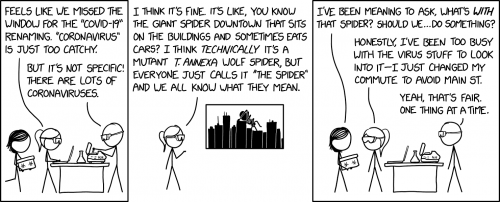I missed my chance. Yesterday was the deadline to apply for the Summer Seminars on Intelligent Design in Seattle.
The Summer Seminars on Intelligent Design are coming to Seattle for 9 days, July 10 to 18, 2020. It’s an entirely free opportunity for undergrad and graduate students to study ID with the stars of the field: Meyer, Axe, Nelson, Wells, Gauger, Sternberg, West, and more.
An excuse to spend a week or two in Seattle would have been welcome — it’s like home, I love that city — but the fact I’d have to spend it with that list of pompous chuckleheads left me more interested in finding a different excuse.
Did you know there’s a Spider Lake in the Olympic National Forest? I should check out whether there are actually significant numbers of spiders there. That would be a far more productive summer break.






